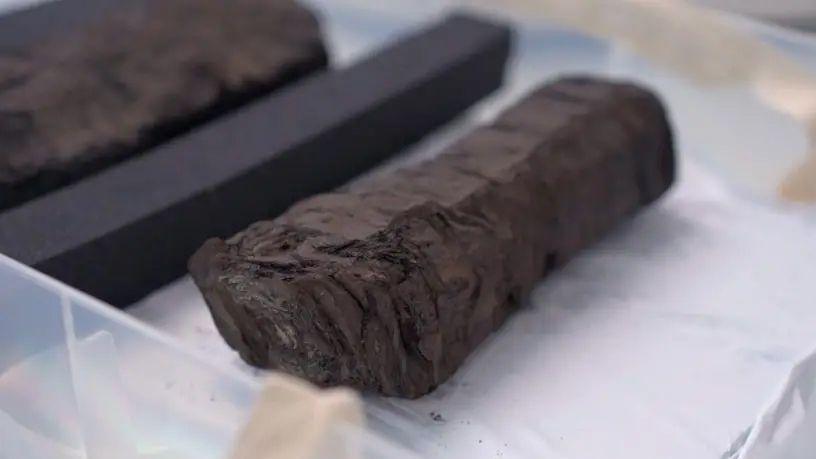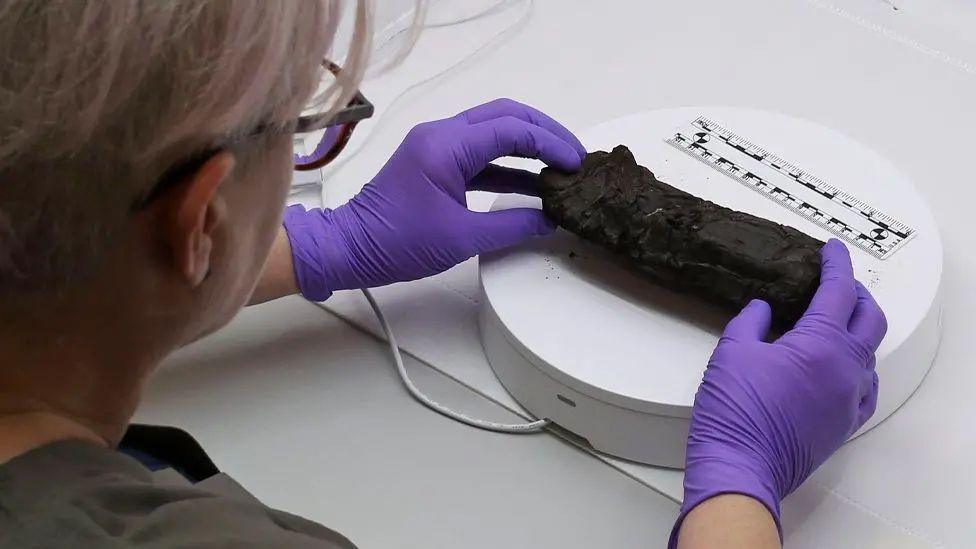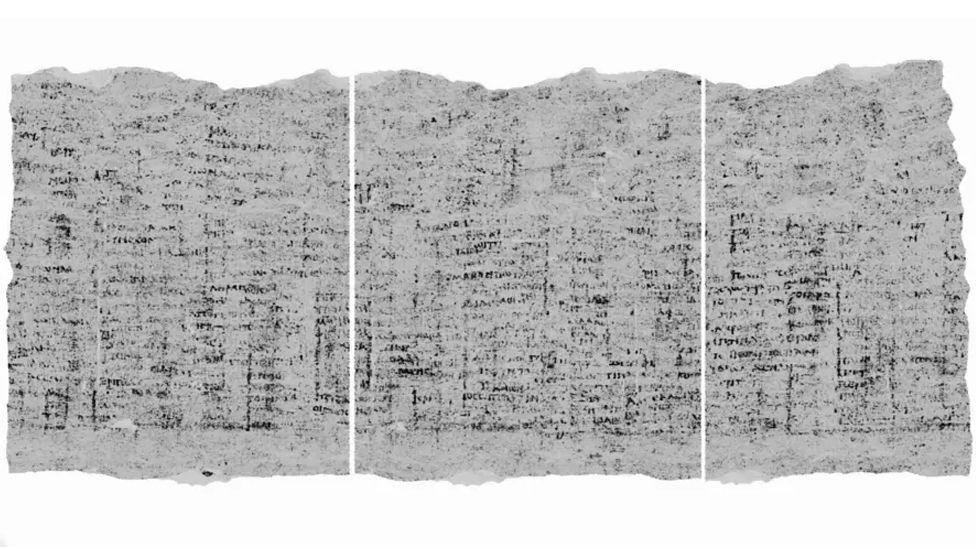Scientists look inside burnt scroll for first time in 2,000 years

hundreds of ancient scrolls were burnt to a crisp during the eruption of Mount Vesuvius in 79AD
- Published
Scientists have been able to read a badly burnt ancient Roman scroll for the first time in 2,000 years.
The scroll was found in the Roman town of Herculaneum and was burnt by the volcanic eruption of Mount Vesuvius in 79AD, making it too fragile to ever be physically opened.
But now, scientists have used a combination of X-ray scans and artificial intelligence to open it 'virtually', revealing its hidden text.
The scientists say that more time and work are needed to be able to read the scroll properly, but that the results so far have been very exciting.
- Published15 October 2023
- Published21 February 2024
- Published14 February 2022

The scrolls are incredibly fragile and must be handled carefully
"We're confident we will be able to read pretty much the whole scroll in its entirety, and it's the first time we've really been able to say that with high confidence," said Stephen Parsons, project lead for the Vesuvius Challenge - an international competition attempting to read the Herculaneum scrolls.
The team has already been able to read a few words of the scroll, which they think is a work of philosophy - the study of questioning the world around us.
To be able to read the scroll, the scientists took it to Diamond Light Source in Oxfordshire, where it was placed inside a huge machine called a synchrotron.
Then it was hit with a powerful X-ray beam that can see through the scroll without damaging it.
"It can see things on the scale of a few thousandths of a millimetre," explained Adrian Mancuso, director of physical sciences at Diamond.

A combination of X-ray scans and artificial intelligence has meant that scientists have been able to peek inside the scrolls for the first time
These X-ray images were then uploaded to a computer to create a 3D model of the scroll.
After that, artificial intelligence is used to help identify the ink on the scroll, which is easier said than done, as both the papyrus paper and ink are made from carbon - making it difficult to tell them apart.
So the AI hunts for the tiniest signs that ink might be there, then the ink is painted on digitally, bringing the letters to light.
"We can tell the entire scroll is full of text," said Stephen Parsons.
"Now we can work on making it show up more clearly. We're going to go from a handful of words to really substantial passages."
The scientists are hoping this technique can be used on other burnt Herculaneum scrolls to help them discover more about what life was like for people living at that time.
